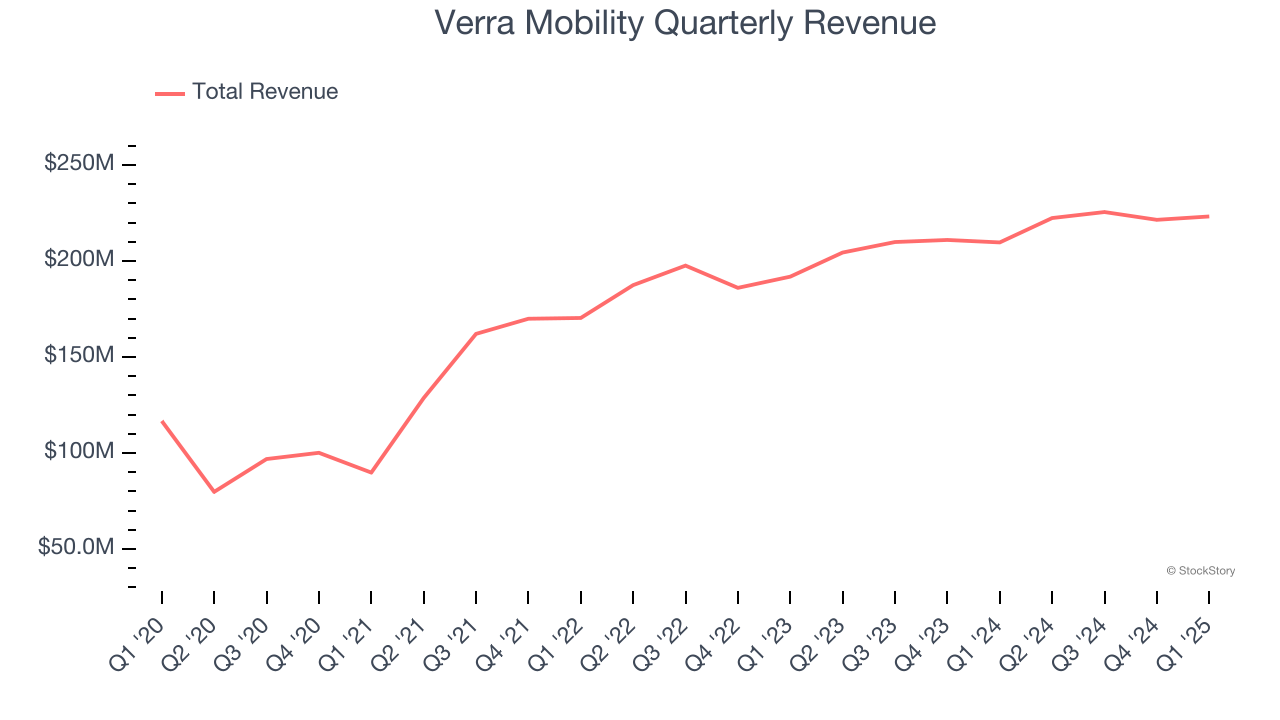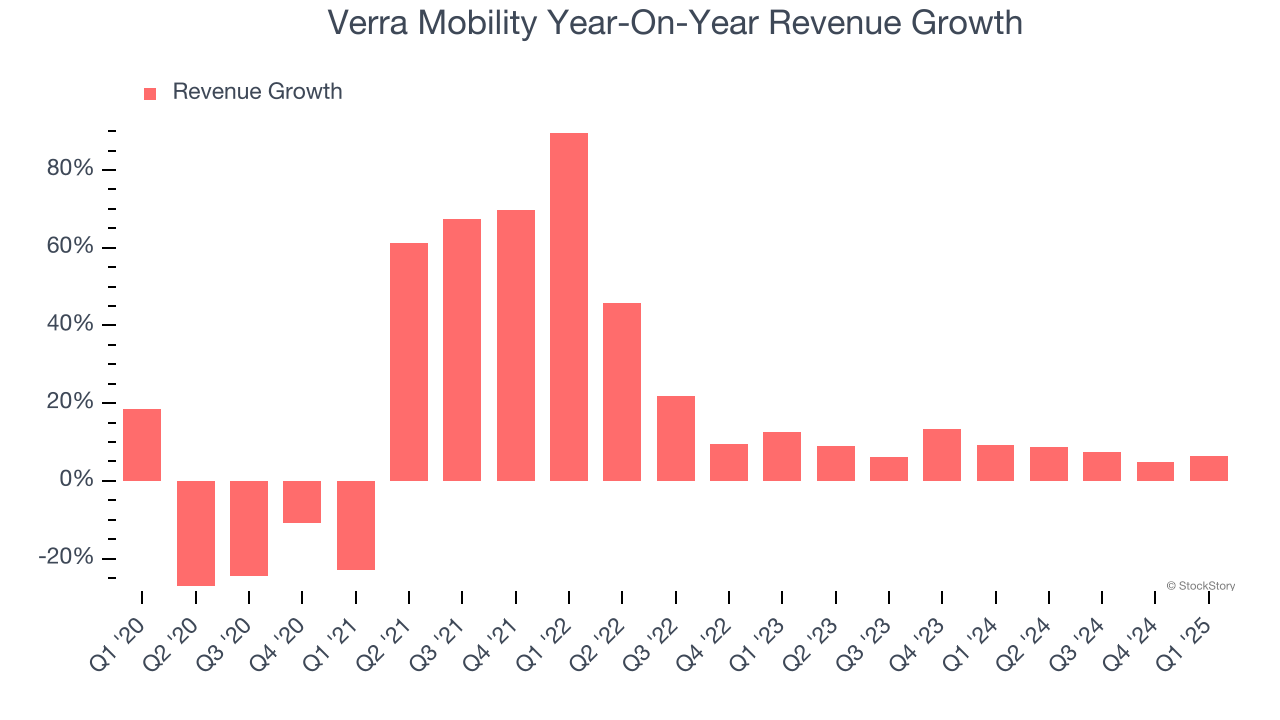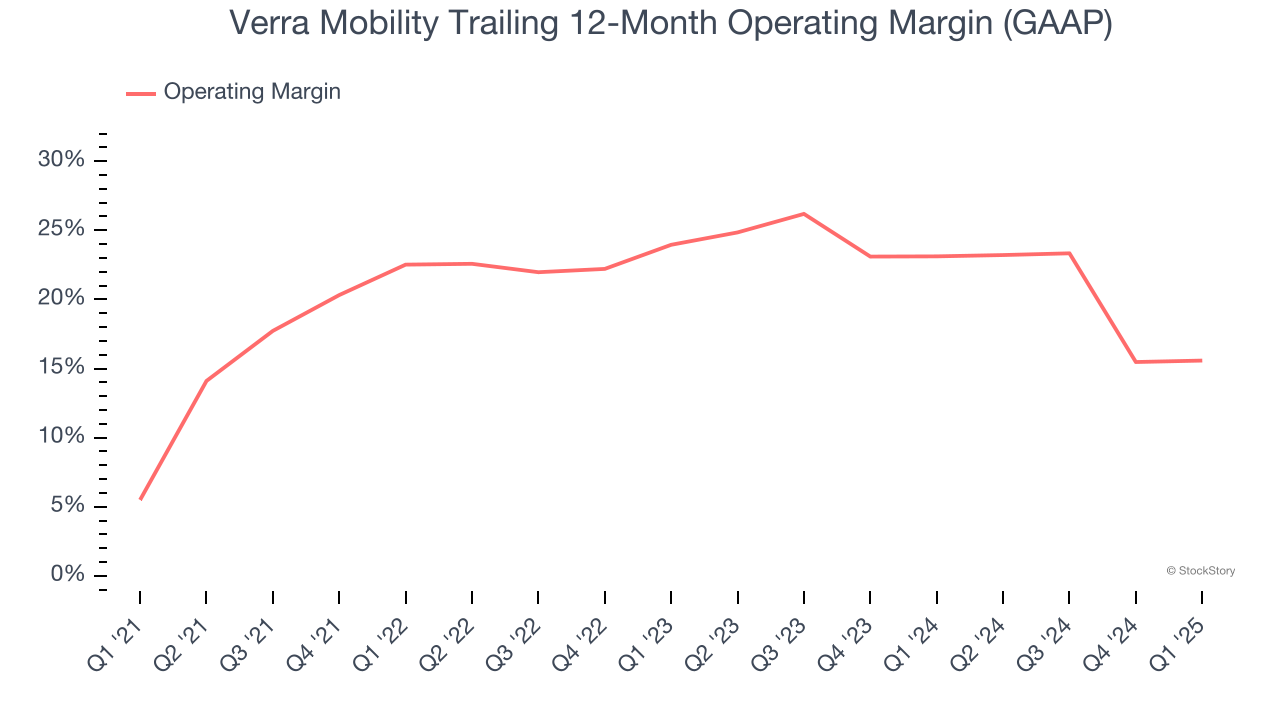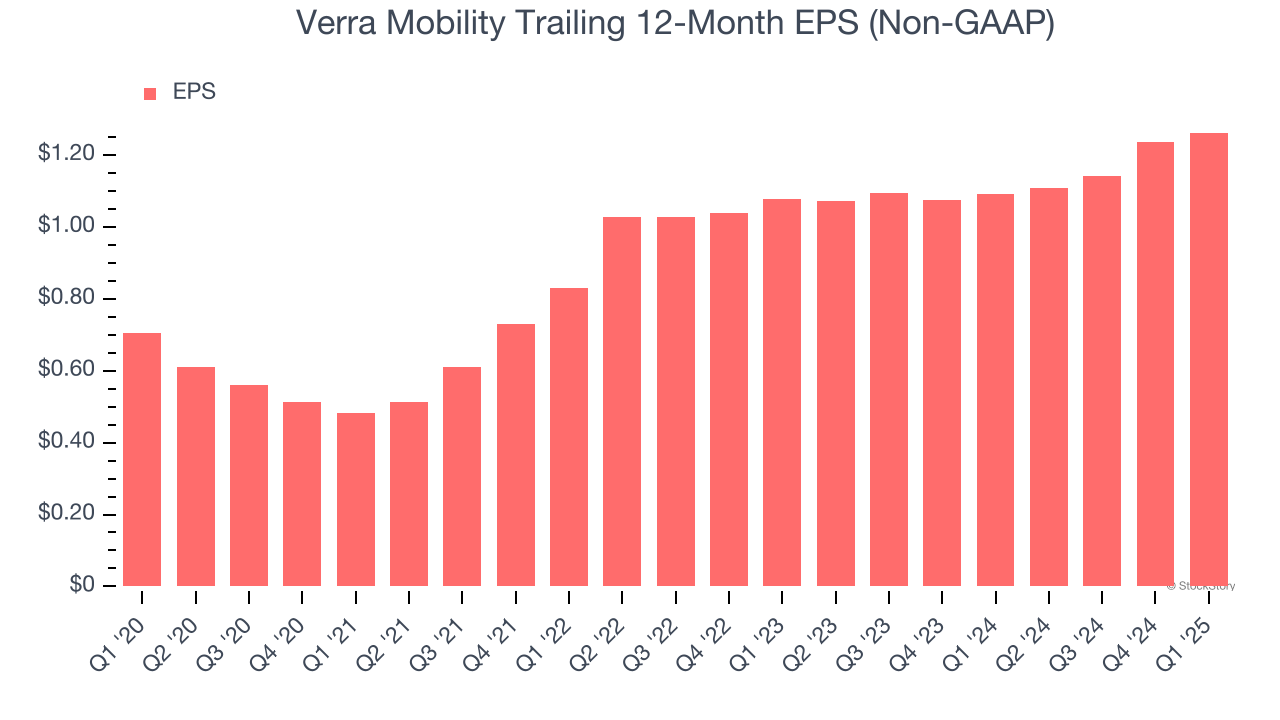
Traffic solutions company Verra Mobility (NYSE:VRRM) reported Q1 CY2025 results beating Wall Street’s revenue expectations, with sales up 6.4% year on year to $223.3 million. The company expects the full year’s revenue to be around $930 million, close to analysts’ estimates. Its non-GAAP profit of $0.30 per share was 4.5% above analysts’ consensus estimates.
Is now the time to buy Verra Mobility? Find out by accessing our full research report, it’s free.
Verra Mobility (VRRM) Q1 CY2025 Highlights:
- Revenue: $223.3 million vs analyst estimates of $217 million (6.4% year-on-year growth, 2.9% beat)
- Adjusted EPS: $0.30 vs analyst estimates of $0.29 (4.5% beat)
- Adjusted EBITDA: $95.44 million vs analyst estimates of $92.24 million (42.7% margin, 3.5% beat)
- The company reconfirmed its revenue guidance for the full year of $930 million at the midpoint
- Management reiterated its full-year Adjusted EPS guidance of $1.33 at the midpoint
- EBITDA guidance for the full year is $415 million at the midpoint, in line with analyst expectations
- Operating Margin: 25.7%, in line with the same quarter last year
- Free Cash Flow Margin: 37.7%, up from 9.6% in the same quarter last year
- Market Capitalization: $3.55 billion
"We delivered a strong first quarter with all key financial measures ahead of our internal expectations," said David Roberts, President and CEO, Verra Mobility.
Company Overview
Managing over 165 million tolling transactions per year, Verra Mobility (NYSE:VRRM) is a leading provider of smart mobility technology that enhances safety, efficiency, and convenience on roadways.
Sales Growth
A company’s long-term sales performance is one signal of its overall quality. Any business can experience short-term success, but top-performing ones enjoy sustained growth for years. Luckily, Verra Mobility’s sales grew at an exceptional 13.8% compounded annual growth rate over the last five years. Its growth surpassed the average industrials company and shows its offerings resonate with customers, a great starting point for our analysis.

We at StockStory place the most emphasis on long-term growth, but within industrials, a half-decade historical view may miss cycles, industry trends, or a company capitalizing on catalysts such as a new contract win or a successful product line. Verra Mobility’s annualized revenue growth of 8.2% over the last two years is below its five-year trend, but we still think the results were respectable. We also think Verra Mobility’s is one of the better Electrical Systems businesses as many of its peers faced declining sales because of cyclical headwinds. 
This quarter, Verra Mobility reported year-on-year revenue growth of 6.4%, and its $223.3 million of revenue exceeded Wall Street’s estimates by 2.9%.
Looking ahead, sell-side analysts expect revenue to grow 6.7% over the next 12 months, similar to its two-year rate. This projection is underwhelming and suggests its products and services will face some demand challenges. At least the company is tracking well in other measures of financial health.
Here at StockStory, we certainly understand the potential of thematic investing. Diverse winners from Microsoft (MSFT) to Alphabet (GOOG), Coca-Cola (KO) to Monster Beverage (MNST) could all have been identified as promising growth stories with a megatrend driving the growth. So, in that spirit, we’ve identified a relatively under-the-radar profitable growth stock benefiting from the rise of AI, available to you FREE via this link.
Operating Margin
Verra Mobility has been a well-oiled machine over the last five years. It demonstrated elite profitability for an industrials business, boasting an average operating margin of 19.4%. This result isn’t surprising as its high gross margin gives it a favorable starting point.
Looking at the trend in its profitability, Verra Mobility’s operating margin rose by 10.1 percentage points over the last five years, as its sales growth gave it immense operating leverage.

This quarter, Verra Mobility generated an operating profit margin of 25.7%, in line with the same quarter last year. This indicates the company’s cost structure has recently been stable.
Earnings Per Share
Revenue trends explain a company’s historical growth, but the long-term change in earnings per share (EPS) points to the profitability of that growth – for example, a company could inflate its sales through excessive spending on advertising and promotions.
Verra Mobility’s EPS grew at a remarkable 12.4% compounded annual growth rate over the last five years. Despite its operating margin expansion and share repurchases during that time, this performance was lower than its 13.8% annualized revenue growth, telling us the delta came from reduced interest expenses or taxes.

Like with revenue, we analyze EPS over a shorter period to see if we are missing a change in the business.
For Verra Mobility, its two-year annual EPS growth of 8.3% was lower than its five-year trend. This wasn’t great, but at least the company was successful in other measures of financial health.
In Q1, Verra Mobility reported EPS at $0.30, up from $0.27 in the same quarter last year. This print beat analysts’ estimates by 4.5%. Over the next 12 months, Wall Street expects Verra Mobility’s full-year EPS of $1.26 to grow 7.9%.
Key Takeaways from Verra Mobility’s Q1 Results
We enjoyed seeing Verra Mobility beat analysts’ revenue expectations this quarter. We were also happy its EBITDA outperformed Wall Street’s estimates. Overall, this print had some key positives. The stock remained flat at $22.30 immediately following the results.
Verra Mobility put up rock-solid earnings, but one quarter doesn’t necessarily make the stock a buy. Let’s see if this is a good investment. If you’re making that decision, you should consider the bigger picture of valuation, business qualities, as well as the latest earnings. We cover that in our actionable full research report which you can read here, it’s free.
